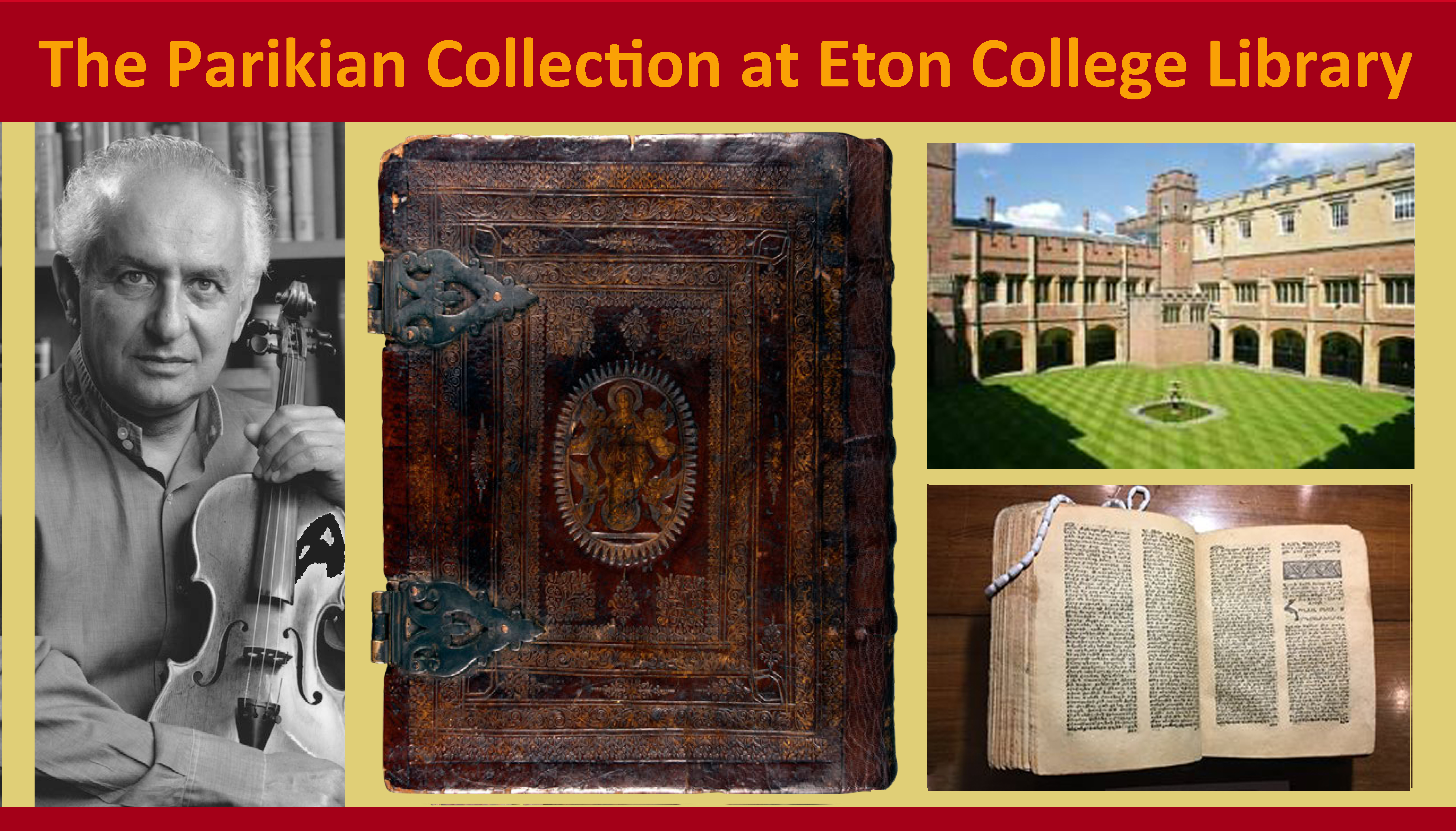
The Parikian Collection: A New Treasure Made Public
Hratch Tchilingirian | 21 February 2018
Eton College formally launched the collection of some 650 volumes of rare early Armenian printed books from the 16th to 19th centuries, bequeathed to the school by renowned British-Armenian violinist Manoug Parikian (1920-1987).
The event at Eton on 20 February 2018 coincides with the 350th anniversary of the printing of the first Armenian Bible by Voskan Erevantsi in Amsterdam in 1666, a limited edition of which is included in the Parikian Collection, with an impressive binding designed by the pre-eminent 17th-century Dutch bookbinder Albert Magnus.
Although acquired in 1988, the collection was catalogued nearly 30 years later -- by Dr. V. N. Nersessian, former Christian Middle East Section curator at the British Library and with the support of the Calouste Gulbenkian Foundation -- and is now available for researchers.
Over the decades, with his wife Diana (Carbutt) (1927-2012), a well-known antiquarian bookseller and herself a musician, Manoug Parikian had assembled a valuable collection of early Armenian printed books. Upon his death in 1987, the collection was given to Eton College, where their two sons, Stepan and Levon, had been educated. It is said that London-born Diana, daughter of a chartered accountant, "always used the Armenian alphabet for the cost-coding of her books, something that may baffle the provenance detectives of the future but will stand as a hallmark of books of distinction in libraries the world over."
Manoug Parikian was born in Mersin, Cilicia (today Turkey) in 1920, but grew up in Cyprus where the family escaped after WWI. He studied music in London at the Trinity College of Music (1936 to 1939) and made his solo debut in 1947 in Liverpool. He led a very successful career as a soloist in Britain and across Europe, the Middle East, Canada and the Soviet Union at the time. Parikian led the Liverpool Philharmonic (1947-48), London Philharmonia Orchestra (1949-57) and various other chamber orchestras. He also taught at the Royal College of Music (1954-1956) and at the Royal Academy of Music (since 1959), and is known for his many important recordings. As noted in his biography, Parikian “inspired many younger English composers to write major works for his instrument.”
The Parikian Collection at Eton includes outstanding volumes “from the first half of the 17th century to 1850 and beyond”, covering “the principal centres of Armenian printing,” explains Dr. Nersessian in his introduction. “Of particular interest is a small selection of 16th-century western publications, mostly in Latin, introducing the use of Armenian founts prior to the emergence of Armenian printing.”
The launch at Eton College started with an exhibit of some of the rare books in the library, followed by a presentation on early Armenian printing by Dr. Gagik Stepan-Sarkissian. The celebration was crowned with a wonderful concert by the Chilingirian Quartet, led by Levon Chilingirian, Manoug Parikian's nephew.
Manoug Parikian’s legacy certainly adds great scholarly and cultural value to the rich Armenian collections of manuscripts and rare printed books found in various British institutions, such as the British Library, Oxford, Cambridge, Durham universities and others.
(More details are found in the special booklet prepared for the occasion.)


